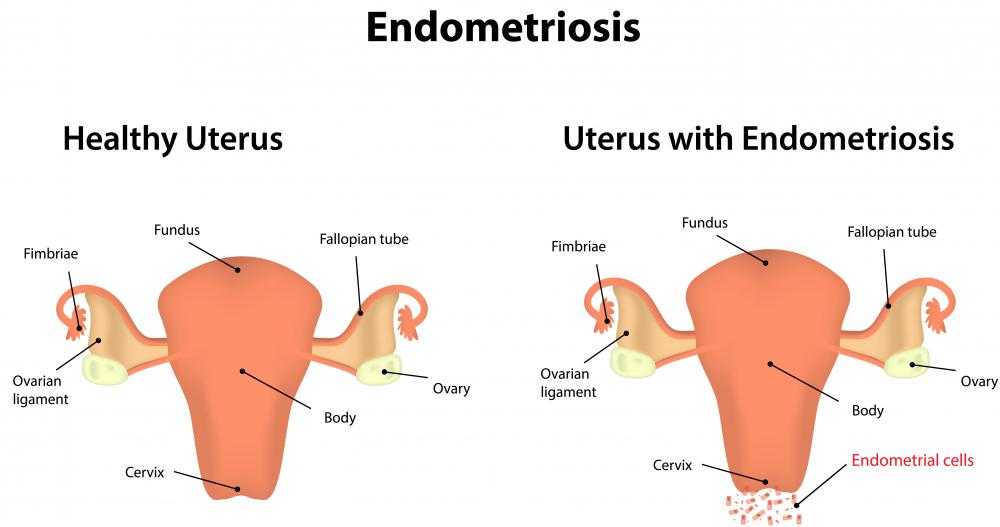At TheHealthBoard, we're committed to delivering accurate, trustworthy information. Our expert-authored content is rigorously fact-checked and sourced from credible authorities. Discover how we uphold the highest standards in providing you with reliable knowledge.
What Are the Different Types of Uterus Tissue?
The uterus, also called the womb, is the female reproductive organ in which a fetus grows during pregnancy. This organ has multiple layers, each consisting of different types of uterus tissue. The outer layer of tissue is known as the serosa, the middle layer is the myometrium and the innermost layer is called the endometrium.
The outward appearance of the uterus is that of an upside-down pear. In a healthy uterus, the serosa is smooth, allowing it to expand easily around other abdominal organs during pregnancy. If a woman has uterine fibroids, these are often visible on the outside of the uterus, affecting the appearance of the uterus tissue. Some fibroids grow outside the uterus, attached to the serosa, and others grow within the uterus but may cause bulges to appear in the outer tissue layer if they become large enough.

The myometrium is the second layer of uterus tissue and is heavily muscled and firm, with a substantial blood supply. During pregnancy, this layer expands to accommodate the growing fetus. The muscles of the myometrium also play a part in labor, by contracting to push the baby from the womb. Women who experience problems with uterus tissue in this layer, such as fibroids or cysts, may experience difficulties conceiving a child. Surgical treatment of such conditions may also increase the risk of uterine rupture during childbirth, and physicians often recommend delivery by cesarean section for these patients.

The final layer in the anatomy of the uterus is the endometrium. This is the lining of the uterus that is shed each month during a woman's menstrual period. If she conceives a child, the uterus tissue is not shed, but remains for the fetus to implant and begin to grow.
Uterus tissue that is meant to grow only in the endometrium may appear elsewhere in the body, most frequently in the abdominal cavity. When the menstrual period occurs, the body attempts to shed this tissue, but the misplaced tissue has no way to leave the body, unlike the normal endometrial lining. The unshed tissue irritates the other organs in the abdomen, often causing the organs to stick together or develop extensive scarring. This condition, known as endometriosis, is very painful and may lead to infertility. Women are more at risk for endometriosis if they have a family history of the condition, have never had a child or have abnormally long menstrual periods.
AS FEATURED ON:
AS FEATURED ON:



















Discuss this Article
Post your comments